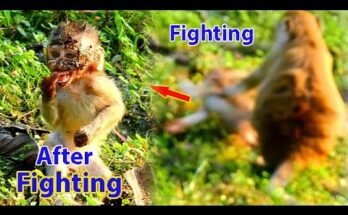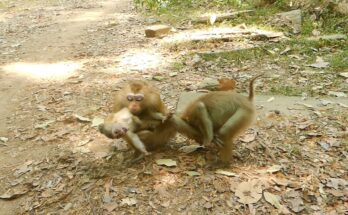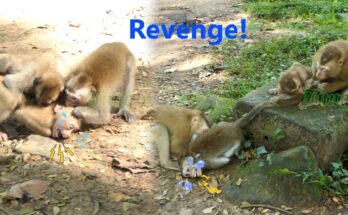The peaceful morning in the forest turns suddenly tense when a sharp cry echoes through the trees. A tiny baby monkey, still too young to judge distances well, has slipped from a branch while trying to follow its mother. The fall is not long, but for such a small and fragile body, it is enough to cause real danger. Leaves scatter as the little one lands on the ground, stunned, trembling, and unable to move properly. Its frightened whimpers draw immediate attention from other members of the troop, who circle anxiously yet hesitate, unsure how to help.
Moments later, rescuers nearby—who had been observing the troop—rush in when they see the baby lying helplessly. The mother monkey hovers above, distressed, pacing in confusion as she tries to stay close but not interfere. The rescue team approaches carefully, moving slowly to avoid causing further panic. With gentle hands, they check the baby for injuries, assessing breathing, movement, and signs of shock. The tiny monkey clings weakly to the rescuer’s fingers, its eyes watery from fear and pain.
As the baby is lifted from the forest floor, the mother follows closely, watching every step. The rescuers clean dirt from the baby’s fur, soothe it softly, and ensure there are no serious wounds or fractures. Gradually, the little one starts to regain strength, its cries easing into soft, tired breaths.
Once stabilized, the rescuers return the infant to its mother, who immediately gathers the baby into her arms with visible relief. The troop resumes moving through the canopy, but with extra caution. What begins as a terrifying moment ends in a heart-warming reunion—an urgent reminder of how fragile young wildlife can be, and how vital timely rescue truly is.


